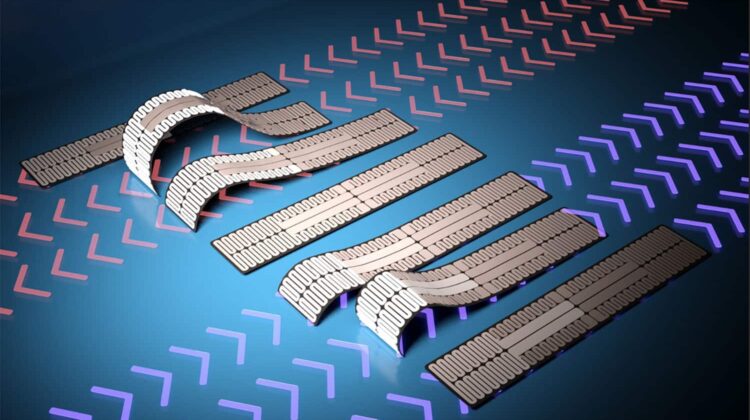
Researchers at North Carolina State University have developed a caterpillar-like soft robot that can move forwards, backwards and dip under narrow spaces. The caterpillar-bot’s movement is driven by a novel pattern of silver nanowires that use heat to control the way the robot bends, allowing users to steer the robot in either direction.
‘A caterpillar’s movement is controlled by local curvature of its body – its body curves differently when it pulls itself forward than it does when it pushes itself backward,’ said Yong Zhu, the Andrew A Adams distinguished professor of mechanical and aerospace engineering at NC State. ‘We’ve drawn inspiration from the caterpillar’s biomechanics to mimic that local curvature and use nanowire heaters to control similar curvature and movement in the caterpillar-bot.
‘Engineering soft robots that can move in two different directions is a significant challenge,’ he continued. ‘The embedded nanowire heaters allow us to control the movement of the robot in two ways: we can control which sections of the robot bend by controlling the pattern of heating in the soft robot and we can control the extent to which those sections bend by controlling the amount of heat being applied.’
The caterpillar-bot consists of two layers of polymer that respond differently when exposed to heat, the bottom layer contracting and the top layer expanding. Embedded within the top layer is a pattern of silver nanowires that includes multiple lead points where researchers can apply an electric current, enabling them to control which sections of the pattern heat up and by how much.
‘We demonstrated that the caterpillar-bot is capable of pulling itself forward and pushing itself backward,’ said postdoctoral researcher Shuang Wu. ‘In general, the more current we applied, the faster it would move in either direction. However, we found that there was an optimal cycle, which gave the polymer time to cool – effectively allowing the “muscle” to relax before contracting again. If we tried to cycle the caterpillar-bot too quickly, the body did not have time to relax before contracting again, which impaired its movement.’
The researchers also demonstrated that the caterpillar-bot’s movement could be controlled to the point where users were able steer it under a very low gap – similar to guiding the robot to slip under a door. In essence, the researchers could control both forward and backward motion as well as how high the robot bent upwards at any point in that process.
‘This approach to driving motion in a soft robot is highly energy efficient and we’re interested in exploring ways that we could make this process even more efficient,’ said Zhu. ‘Additional next steps include integrating this approach to soft robot locomotion with sensors or other technologies for use in various applications – such as search-and-rescue devices.’
The research has been published in Science Advances.



